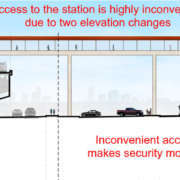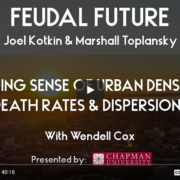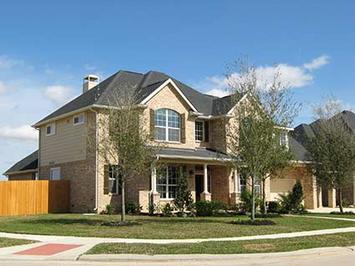Texas and Houston Growth Secret, Texas Miracle is More than Oil
My lead item this week is a comment I made on the Market Urbanism Report Facebook group:
Going beyond all the usual reasons given for Texas’ high growth, here’s the technical overlooked one that I think is a big key: Texas does not allow unincorporated counties to regulate land use (i.e. create zoning), which creates pretty much a totally free market in development just outside cities. Combine that with MUDs (municipal utility districts) that allow private developers to float bonds to pay for master-planned community infrastructure paid back by property taxes on that development, and there is complete flexibility in the suburban/exurban housing market. And those master-planned communities compete fiercely on price and amenities (far more than incorporated cities do). That, in turn, forces the core incorporated cities to “compete” for private development dollars by not over-regulating – otherwise they’ll just jump outside the city limits. It’s an overall balance of forces that keeps welcoming development and newcomers with a strong value proposition (high amenities with relatively low costs).
Moving on to some smaller items this week:
- I took this Threads of Texas quiz and came out a Civic Pragmatist – not much surprise there, lol. Let me know your own results and thoughts in the comments.
“Civic Pragmatists are optimistic yet pragmatic when they think about a changing Texas. Their ideal Texas is one where the state is a leader in the knowledge-economy industries, as well as a Texas where everyone feels safe and like they belong.”
- Bloomberg CityLab: Where Americans are moving – More Americans Are Leaving Cities, But Don’t Call It an Urban Exodus. Some pretty cool graphs. There’s one map where you can click on Houston and see where people moved when leaving (mostly the rest of the Texas Triangle), but there doesn’t seem to be the opposite ability to see where people moving to Houston came from.
- National Review: Biden’s Infrastructure Bill Aims to End Single-Family Zoning (hat tip to Bill). Looks like they editorialize against federal intervention to force the elimination of local SFZ, which I would agree is problematic, but not necessarily against all zoning reform:
“The zoning issue is tough and complex. It balances principled libertarian objections to zoning and the interests of developers, on the one hand, against core principles of federalism and local control, on the other.”
I’d say Houston’s secret sauce is less about not having SFZ (deed restrictions are pretty much the same) than allowing pretty much anything else everywhere that’s not single-family: apartments, towers, retail, mixed-use, offices, you name it.
- The Federalist: The Texas Miracle Isn’t All About Oil – Given that oil prices remain less than half of what they were at their peak, all those arguing that the Texas model will fail are just wrong.
- Engineered timber buildings heading towards 200+ meter heights with materials 80% lighter than steel while being net carbon-negative (and a similar article). This could be a major solution to climate change around the world if it can replace concrete and steel. Excerpts:
“In India alone, the equivalent of a city the size of Chicago will have to be developed every year to meet demand for housing”…
Michael Ramage of the University of Cambridge told the meeting of a 300-square-metre four-story wooden building constructed in that city. Erecting this generated 126 tonnes of CO2. Had it been made with concrete the tally would have risen to 310 tonnes. If steel had been used, emissions would have topped 498 tonnes. Indeed, from one point of view, this building might actually be viewed as “carbon negative”. When trees grow they lock carbon up in their wood—in this case the equivalent of 540 tonnes of CO2. Preserved in Cambridge rather than recycled by beetles, fungi and bacteria, that carbon represents a long-term subtraction of CO2 from the atmosphere.
If building with wood takes off, it does raise concern about there being enough trees to go round. But with sustainably managed forests that should not be a problem, says Dr. Ramage. A family-sized apartment requires about 30 cubic metres of timber, and he estimates Europe’s sustainable forests alone grow that amount every seven seconds. Nor is fire a risk, for “engineered timber does not burn easily.”
“So Vyas picked another metropolis that’s increasingly become young people’s next-best option — Houston.
Now 34, Vyas, a tech worker, has lived in Houston since 2013. “I knew I didn’t like New York, so this was the next best thing,” Vyas said. “There are a lot of things you want to try when you are younger — you want to try new things. Houston gives you that, whether it’s food, people or dating. And it’s cheap to live in.”
Hear, hear!
This piece first appeared at Houston Strategies.
Tory Gattis is a Founding Senior Fellow with the Center for Opportunity Urbanism and co-authored the original study with noted urbanist Joel Kotkin and others, creating a city philosophy around upward social mobility for all citizens as an alternative to the popular smart growth, new urbanism, and creative class movements. He is also an editor of the Houston Strategies blog.
Photo credit: La Citta Vitta, via Flickr, using CC 2.0 License.









